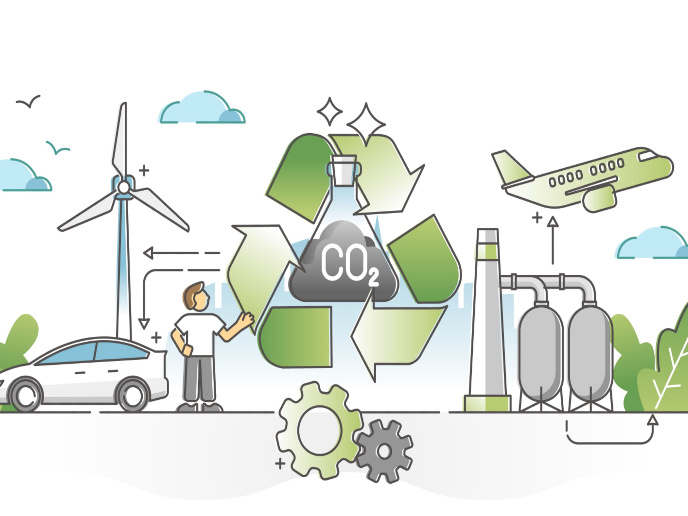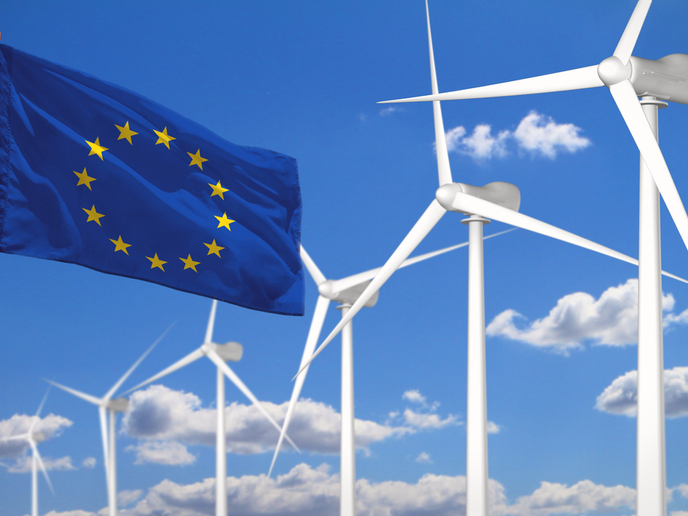Using humidity to create net zero energy buildings
Operational energy use in buildings represents about 30 % of global final energy consumption. Transitioning towards net zero buildings – which produce as much energy as they use – could therefore have a significant impact on energy efficiency, and help Europe to meet its net zero targets. The EU-funded SSHARE project sought to contribute towards this goal through the development of an innovative building envelope. The basic concept is that this envelope can heat or cool the building, depending on the time of year using only atmospheric humidity as both a thermal and electric energy supply. “We started working on this concept over 10 years ago,” explains SSHARE project coordinator Andriy Lyubchyk from COFAC (website in Portuguese) in Portugal. “We achieved proof of concept through our first EU-funded project called HUNTER, and were able to demonstrate how we can convert atmospheric humidity into electricity.”
Constant water adsorption and evaporation
The next step, says Lyubchyk, was to try to turn this technology into a usable application, something that could be applied to the outside of buildings and work under normal atmospheric conditions. This was the key goal of the SSHARE project which was supported by the Marie Skłodowska-Curie Actions programme. First, the project team used a calcium silicate plate containing tubes developed by the University of the Balearic Islands, which allows hot water to flow through. These tubes contain tiny holes that enable water to disperse on one side of the plate. “These silicate plates have huge adsorption capacity,” notes Lyubchyk. “A 10 kg plate for example can absorb 20 kg of water.” The side of the plate facing the building is constantly wet, while the other side is exposed to ambient temperature. When this ambient temperature increases, the plates start to evaporate water. “This is a bit like how sweating aids thermoregulation of the human body through water desorption: it helps the building to cool down,” adds Lyubchyk. “There is constant adsorption and evaporation of water, depending on the ambient temperature outside.” Next, the project applied a self-sufficient water pump mechanism to ensure continuous heating and cooling. The whole concept was tested using 1 m2 panels, which demonstrated the feasibility of the technology.
Competitive energy generation
Lyubchyk is confident that this will be a competitive solution, not just for the ambient heating and cooling of buildings but also for electricity generation. “I believe this will one day be implemented by the construction industry,” he says. “Imagine an entire building covered in these energy generating panels. This would be not just a net zero energy building, but an energy generator. My dream is that you would be able to park your car in the basement, and it would be automatically charged by electricity generated by the building itself.” Lyubchyk and his colleagues have launched a start-up company, with the intention of addressing issues such as patents, and moving towards commercialisation.
Converting atmospheric humidity into electricity
The project team is also currently further developing some aspects of the technology pioneered in SSHARE. Through the EU-funded CATCHER project, Lyubchyk and his colleagues are looking into how converting atmospheric humidity into electricity could be incorporated into the power grid. “We are focusing here on enhancing the efficiency of the conversion process,” he explains. “We will create some prototypes that generate electricity just from atmospheric humidity.” This would represent a brand-new renewable energy source, helping Europe to consolidate its position as a green energy leader.
Keywords
SSHARE, net zero, energy, renewable, atmospheric, electricity, adsorption







